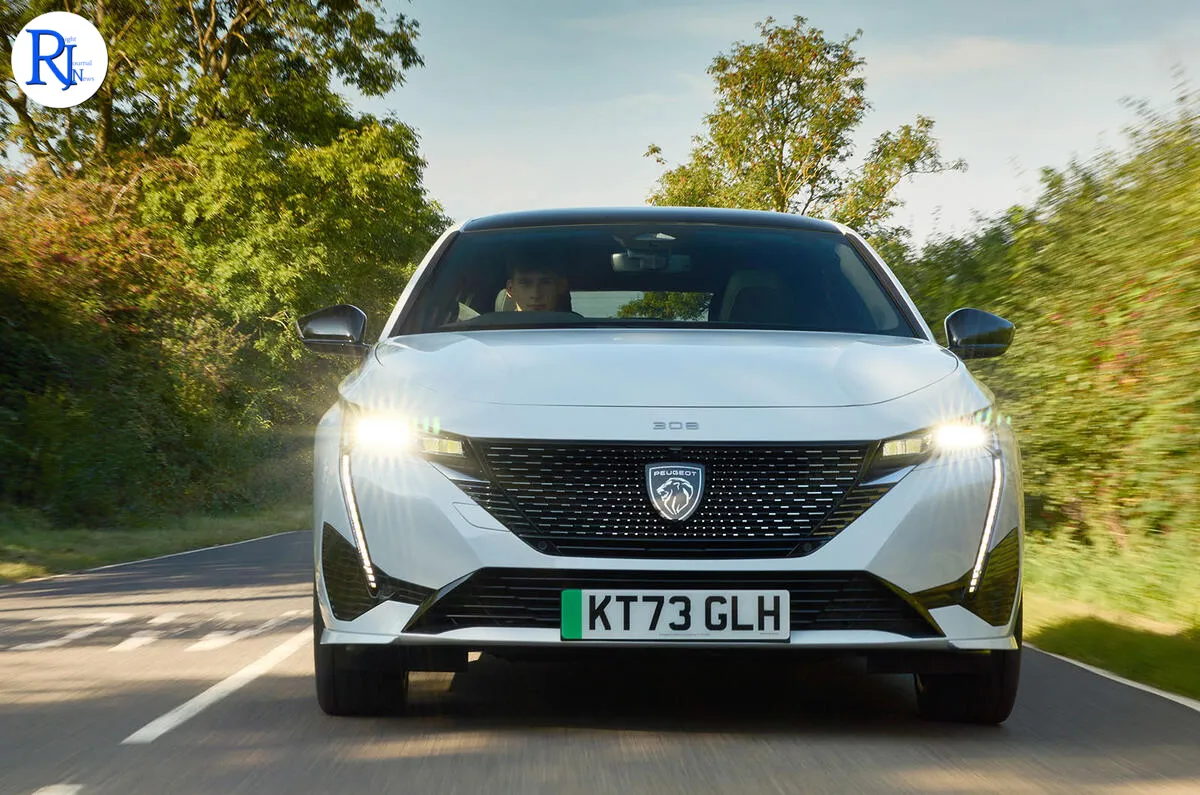Peugeot has pushed its all-electric e-308 and e-308 SW into one of the most price-sensitive corners of the car market, betting that style and sharp road manners will win over family buyers who want a premium feel. A prominent UK road test published on 26 November 2025 drew attention to the model’s starting price, which sits at around £40,000 for the cheapest version. That places the Peugeot above several well-known rivals that many buyers can secure for “£37k-odd” or less. The assessment also noted how a wave of aggressively priced Chinese entrants and keen finance deals have reset expectations for what a Golf-sized, zero-emissions hatchback or estate should cost. Peugeot insists its cars hold their value well today, which can help monthly payments. Yet the headline price sets a demanding target in a segment already rich with choice.
The update matters because it frames how one of Europe’s best-known brands plans to compete in the mass-market electric family car class. The e-308 comes as both a hatchback and an estate (SW), highlighting Peugeot’s bid for buyers who need space but will not compromise on design or road feel. It lands in a field where rivals moved earlier and priced lower, and where finance-led decisions can make or break a deal.
Timing and location
Autocar highlighted the pricing and market positioning of the Peugeot e-308 and e-308 SW in a UK review published on 26 November 2025.

Image Source: Autocar
Peugeot targets premium-minded families with hatchback and estate choice
Peugeot positions the e-308 and e-308 SW as stylish, dynamically polished options for families who want a premium edge in their everyday EV. That strategy reflects a brand push to elevate perceived quality while keeping the practical strengths that made the 308 a familiar name. By offering both hatchback and estate body styles from the outset, Peugeot broadens the appeal for households that need extra room without stepping up to a larger, heavier SUV.
The company arrived later than some rivals with full electric power in this market class. Brands such as Renault, Volkswagen and Cupra got to the segment sooner, while EV-focused players from South Korea and Japan—Hyundai, Kia and Nissan—also carved out early advantage. That head start has helped to set customer expectations on both price and features, making Peugeot’s pitch more challenging and more deliberate.
Price pressure grows as rivals undercut the e-308
The latest UK assessments note that the most affordable Peugeot e-308 lists at around £40,000, which sits above the threshold many buyers now expect for a compact electric family car. In contrast, models such as the Renault Mégane E-Tech Electric, Kia Niro EV, Volkswagen ID.3, Fiat 600e and Jeep Avenger can often be had for “£37k-odd” or less, depending on specification and deals. That gap matters at a time when customers pay close attention to value for money.
Analysts point to the broader influence of Chinese car makers that have entered European markets with lower prices and strong equipment levels. Their arrival has sharpened price competition and shifted what many view as the “going rate” for a Golf-sized EV. Even if some buyers prioritise monthly payments over list price, the headline figure frames perceptions and shapes the first impression.
Monthly finance and residual values may blunt sticker shock
While list prices draw headlines, many UK buyers make decisions based on monthly finance costs. This is where residual values play a major role. Reviewers note that Peugeots have improved in this area, which can help reduce monthly outlay even when the list price sits higher than some rivals. Strong residuals spread the cost over time and can narrow the day-to-day difference versus cheaper alternatives.
However, that approach has limits. In a crowded market, a higher upfront price can still act as a barrier, especially for buyers cross-shopping several models. Finance offers fluctuate with interest rates and brand incentives, so Peugeot must watch competitors closely to keep plans attractive. When rivals maintain a lower entry figure and push keen deals, Peugeot’s finance-led strategy needs to work hard to stay compelling.
Shared tech clues: links with Vauxhall Astra Electric
The e-308’s technical relation to the Vauxhall Astra Electric underlines how Stellantis brands share platforms and components to speed development and manage costs. Reviewers call out that the Astra Electric sits at a broadly similar price level to the e-308, reinforcing the view that Peugeot is not out of step with its closest platform peer.
This link may help reassure buyers about parts availability, service networks and long-term support—factors that matter for an emerging EV segment. Still, shared underpinnings do not remove the pricing challenge set by rivals who came to market earlier or source components at lower cost. Peugeot must convince buyers that its tuning, design and brand feel justify the premium.
Estate versatility: e-308 SW aims at space-conscious households
By offering the e-308 SW estate alongside the hatch, Peugeot speaks directly to families who want electric power without losing load space. Estates often serve school runs, weekend trips and long motorway drives with ease, and the SW’s presence expands choice beyond the many hatchbacks and crossovers that dominate this class. It signals that Peugeot sees room for a more traditional body style in the EV era.
The estate also supports Peugeot’s “premium yet practical” message. Buyers who value a lower roofline and a more car-like drive than a tall SUV may find the SW format appealing. As EV charging networks grow and more households consider going fully electric, the estate’s versatility could help the e-308 range stand out, even as price remains a central talking point.
Rivals define the benchmark on value
The competitive set is fierce. The Renault Mégane E-Tech Electric, Volkswagen ID.3 and Kia Niro EV count among the most visible options, each with pricing that undercuts the Peugeot at entry level. The Fiat 600e and Jeep Avenger extend the field with smaller footprints and sharp deals that pull attention from value-focused buyers. Together, these models set a price baseline that shapes how shoppers judge the e-308.
Peugeot’s task is to prove that its design, driving polish and perceived quality earn the extra spend. For buyers who rate handling, cabin feel and brand identity, that case may land. For budget-led shoppers, the maths looks tighter. With more competitors arriving, Peugeot must keep refining offers and trim strategies to hit the sweet spot.
Why timing matters in the C-segment EV race
Peugeot’s later move into full-electric power for its C-segment cars carries both risks and opportunities. Arriving after key rivals means Peugeot faces hardened price expectations and less headroom to surprise on cost. Yet entering later also allows the brand to benchmark the field, learn from early missteps, and position its cars as more mature products with refined dynamics.
The UK review published this week framed that timing within a clear market message: the e-308 sets a higher price but leans on design, road manners and residual strength. Whether that balance works will depend on how buyers weigh monthly payment plans, brand appeal and the growing list of alternatives. If Chinese entrants continue to drive down transaction prices, the pressure on list pricing will only intensify.
Peugeot e-308: key takeaways and what to watch
Peugeot’s e-308 and e-308 SW enter the UK spotlight with a premium stance and a price tag that sits above several rivals. Reviewers note that buyers can often secure alternatives such as the Renault Mégane E-Tech Electric, Kia Niro EV and Volkswagen ID.3 for about £37,000 or less, while the cheapest e-308 sits closer to £40,000. Peugeot argues that stronger residuals and finance plans can offset the sticker shock, and the brand backs its case with an estate option for families who want more space. The car’s technical links to the Vauxhall Astra Electric support a consistent strategy within Stellantis, but they also confirm that Peugeot does not undercut its closest peer on price. In the months ahead, watch how Peugeot structures finance offers, how rivals adjust pricing, and whether growing competition from China forces sharper deals across the board. In a market that moves fast, every pound—and every monthly payment—counts.

